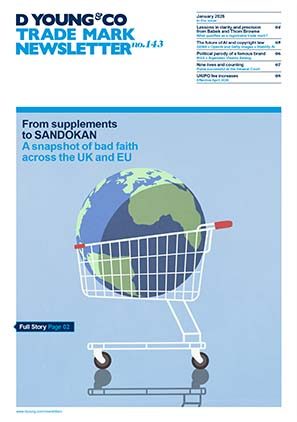General Court deserves a grilling
Grilloumi Food International AB is a subsidiary of Fontana, a Swedish food and beverage company. In 2009 the business was successful in registering the trade mark GRILLOUMI in classes 29 and 30 covering a range of goods including milk products. The application proceeded to registration unchallenged and was renewed in 2019.
In 2016 Fontana sought to extend its protection by registering GRILLOUMI in relation to class 43 services for providing food and drink; coffee shop services and restaurants. This time the application was opposed by the Foundation for the Protection of the Tradition Cheese of Cyprus named HALLOUMI on the basis of its earlier EU collective mark, HALLOUMI registered in 2000 for cheese. Note that the Foundation had not opposed the earlier application by Fontana to register GRILLOUMI for essentially identical goods in class 29.
Both the opposition division and then the Board of Appeal held that the goods and services in question were sufficiently different such that there would be no obvious degree of similarity which might lead to confusion. Both the opposition and the appeal were rejected as a result of the Foundation’s failure to show a likelihood of confusion under Article 8(1)(b) of the Regulation.
Many articles have been written about the purpose of the trade mark registration system and intellectual property rights more broadly and whether they are for the protection of the consumer or to aid businesses in protecting their brands or a combination of the two.
Now consider the situation on a warm sunny summers evening in Stockholm. In this post Covid pandemic era the streets are full of people laughing and with bars and restaurants filling up. You stop at say a juice bar or, depending on your preference of beverage, a coffee shop called GRILLOUMI. You enter to purchase a drink and to soak up the atmosphere. Now, if you are a fan of Halloumi cheese, on seeing the name GRILLOUMI you might briefly pause to wonder whether there is any connection with HALLOUMI; however, what is the likelihood of you being confused into assuming an association between the bar or coffee shop you have just entered and your possible preferred cheese of choice?
Both the opposition division of the EUIPO and the Board of Appeal clearly felt that the risk of confusion arising was remote in the extreme.
Since the Community trade mark (CTM) was introduced in 1996 and Alicante became known for more than just sunny beaches filled with tourists, a significant body of case law has developed detailing which sets of goods and services might be viewed as being similar or not. As you would expect there will always be some cases which find some categories of goods/services similar and others where a different outcome is found, especially before the opposition division and the Board of Appeal.
The usual criteria for determining similarity take into account the nature of the goods and services, their intended purpose or their method of use. More recently, a number of cases have considered the notion of the complementarity of goods - another way of finding a degree of similarity when the usual criteria do not apply. In the often used example of skis and ski boots, despite not being similar, the two would be viewed as complementary in as much as one is necessary for the use of the other.
Having failed before the EUIPO and the Board of Appeal the Foundation’s further appeal to the General Court argued that the Board of Appeal had wrongly applied the notion of mutual indispensability between the services and goods at issue in examining whether there was a complementary connection between them. Unsurprisingly, the EUIPO and also Fontana, which was acting as an intervener, submitted that only a sufficiently pronounced complementary connection would lead consumers to think of, and assume, a common commercial origin. The General Court had already previously held that for complementarity to exist, there needs to be a “close connection” between the goods/services and not only the possibility of a connection or the existence of a coincidental connection.
In its judgment the General Court confirmed that goods and services are complementary where there is a close connection between them, in the sense that one is indispensable or important for use of the other, with the result that consumers may think that the same undertaking is responsible for manufacturing, or offering those goods and services. Notwithstanding this the General Court concluded that the complementary connection between cheese and services for providing food and drink, restaurant services and coffee shop services must lead to the finding that there is a certain degree of similarity and thus the possibility that the relevant public might be led to think that the services and goods have the same commercial origin cannot be excluded.
It is submitted that the possibility of a similarity being found in the minds of the public not being excluded is some distance from there being a likelihood of confusion. The premise of finding goods and services to be complementary has, in the writer’s opinion, always been a backdoor or secondary and, quite rightly, limited opportunity for a finding of similarity. Unfortunately this General Court judgment, unless it is overturned on appeal to the Court of Justice, is likely to open the argument that many more goods and services may be viewed as being complementary and thus, similar, notwithstanding the fact that none of the general criteria for similarity are met.
One wonders how concerned the owners of the GRILLOUMI juice bar or coffee shop might be if they were to find a cease and desist letter land on their front doorstep one day from the Foundation alleging infringement of their HALLOUMI trade mark.
